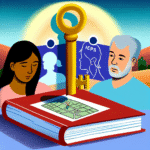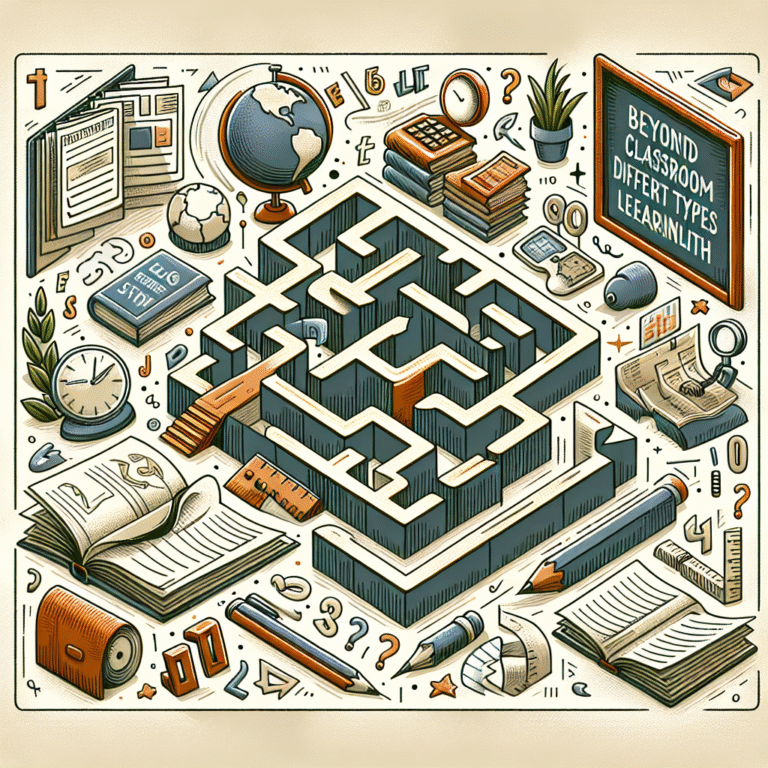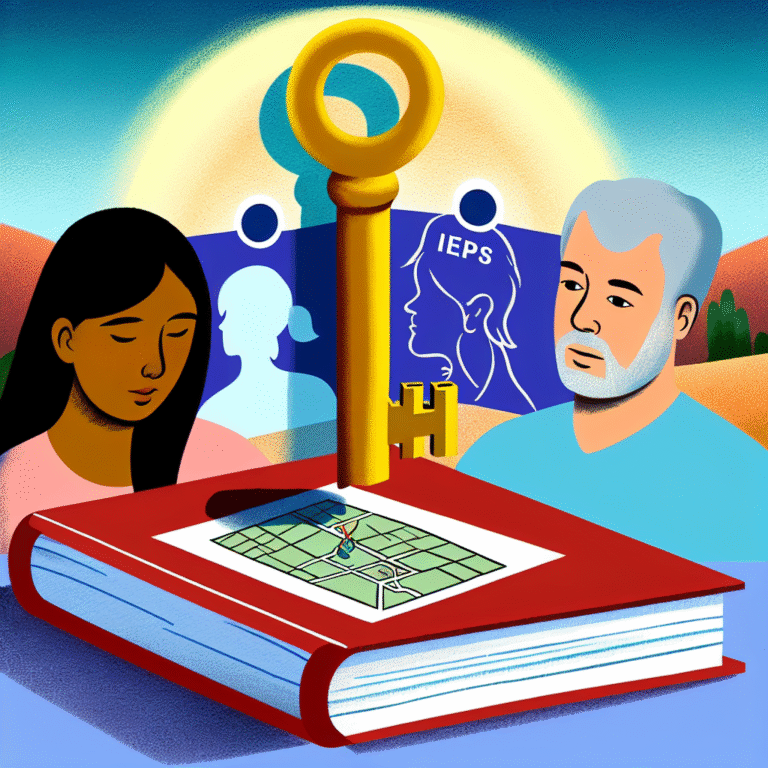
Numbers Don’t Add Up? Understanding the Impact of Learning Disabilities on Math Proficiency: The Essential Guide
Introduction
Have you ever stared at a math problem and felt a wave of confusion wash over you? For many students, this moment isn’t just a fleeting frustration; it can be a hallmark of a deeper issue: learning disabilities. The phrase "Numbers Don’t Add Up" resonates with countless learners who grapple with challenges in math due to these disabilities. Understanding the impact of learning disabilities on math proficiency is essential, not only for educators but also for parents and the students themselves. This article will delve into the complexities of how learning disabilities affect mathematical understanding and explore meaningful solutions for improvement.
Understanding Learning Disabilities in the Context of Math
What Are Learning Disabilities?
Learning disabilities (LDs) are neurological disorders that impact the brain’s ability to process, retain, and communicate information. Math-related disabilities, such as dyscalculia, specifically affect an individual’s ability to understand and work with numbers. Recognizing that "Numbers Don’t Add Up?" is more than just a saying for many students who face these challenges is integral to addressing their educational needs.
Types of Learning Disabilities Affecting Math Proficiency
Dyscalculia: This specific learning disability causes profound difficulty in understanding numbers and performing calculations, often leading to frustration and low self-esteem.
Dyslexia: More commonly associated with reading difficulties, dyslexia can also impact mathematical problem-solving skills, as many math concepts require reading comprehension.
- Nonverbal Learning Disorder: Students with this disorder may struggle with visual-spatial tasks like geometry, which affects their understanding of numeric concepts.
Gold standard definitions and statistics clearly demonstrate that these conditions are more prevalent than many might think, with research indicating that approximately 5-10% of the population may experience significant learning disabilities that impact their academic performance.
The Real-World Impact of Learning Disabilities on Math Skills
Case Study 1: Understanding Dyscalculia in the Classroom
Meet Sarah, a 10-year-old girl diagnosed with dyscalculia. Despite showing a keen interest in learning and participating in class, she consistently struggles with basic arithmetic problems. Teachers notice her anxiety during math tests, often resulting in poor performance.
Analysis:
Sarah’s experience embodies the struggles faced by many children with dyscalculia. The inability to grasp fundamental concepts makes it hard for these students to advance in their understanding, leading to a cycle of low self-confidence and performance. Teachers must adopt innovative strategies, such as multi-sensory learning techniques, to engage students like Sarah, turning challenges into opportunities for growth.
Case Study 2: The Ripple Effect of Math Learning Disabilities
Jack, a high school junior, excels in his English classes but flounders in math. Diagnosed with a nonverbal learning disorder, Jack finds geometry particularly perplexing. The visual-spatial components of the subject seem insurmountable.
Analysis:
Jack’s story highlights the broader implications of learning disabilities on self-esteem and academic performance. Even when a student excels in other subjects, difficulties in math can create feelings of inadequacy. This underscores the necessity for a comprehensive learning plan that incorporates tutoring, technology, and individualized instruction to break through these barriers.
Key Factors Contributing to Math Learning Difficulties
1. Cognitive Processing Challenges
Cognitive processing skills, which include memory, attention, and the ability to visualize space, are critical to understanding mathematical concepts. For students with learning disabilities, these areas often need extra support. A proficient grasp of these skills is vital for tasks ranging from simple arithmetic to complex problem-solving.
2. Emotional Impact
Anxiety and fears surrounding math can inhibit a student’s ability to learn effectively. Math anxiety not only affects performance but can lead to a broader aversion to learning. This vicious cycle is something educators must address through positive reinforcement and engaging curricula.
3. Teaching Strategies
The traditional approach to teaching math often doesn’t cater to students with learning disabilities. Educators are encouraged to implement differentiated instruction and utilize personalized learning plans to address diverse learning styles.
4. Use of Technology
Modern technologies, such as educational apps and interactive platforms, can provide significant benefits for students struggling with math. These tools can offer alternative explanations and practice, helping to bridge gaps in understanding.
Bridging the Gap: Effective Strategies for Improvement
Enhanced Teaching Methods
Teachers should employ a variety of instructional strategies, including:
Multi-sensory Instruction: Using visual, auditory, and kinesthetic methods to engage various learning styles.
Scaffolding Techniques: Breaking down complex problems into smaller, more manageable parts.
- Frequent Reviews and Practice: Regular reinforcement can help solidify concepts for better retention.
Parental Involvement
Parental support is crucial for students with learning disabilities. Parents can encourage practice at home using math games and real-world applications to instill confidence and reduce anxiety around numbers.
Collaborative Learning Environments
Creating an inclusive classroom setting that fosters collaboration can boost morale. Peer tutoring often benefits both the student with disabilities and their peers, as teaching others reinforces their understanding.
Emotional Support and Counseling
Ensuring emotional well-being is as important as academic support. Regular check-ins and counseling services can help students navigate their anxiety, building resilience over time.
Conclusion: Embracing Potential Beyond Numbers
Understanding the challenges faced by students with learning disabilities in math is a vital step toward fostering inclusivity and achievement. While the phrase "Numbers Don’t Add Up?" might ring true for many, with the right strategies, support, and attitude, educators and parents can help students transform their academic experiences. Every learner has the potential to succeed in math, given the right resources and understanding.
FAQs
1. How can I identify if my child has a learning disability in math?
Look for signs like consistent trouble understanding math concepts, difficulty memorizing math facts, or extreme math anxiety. Consulting a qualified psychologist for assessment is recommended.
2. What resources are available for students struggling with math?
Many educational programs and tutoring services specifically cater to learning disabilities. Online resources like math games and interactive learning platforms can also be immensely beneficial.
3. Can learning disabilities be outgrown?
While some students may find they manage their disabilities better with age, many will need ongoing support. Early intervention is key to improving long-term outcomes.
4. How can teachers help reduce math anxiety in students?
Creating a positive learning environment, offering praise for effort over correctness, and normalizing mistakes as part of the learning process can help reduce anxiety.
5. What role does technology play in assisting students with learning disabilities?
Technology can provide personalized learning experiences and alternative methods for problem-solving, making math more accessible and engaging for students with disabilities.
In understanding that "Numbers Don’t Add Up?" for many students due to learning disabilities, we can reframe our approach to not just focus on the numbers but on building confidence, skills, and a love for learning. Whether you are an educator, parent, or student, remember that overcoming these challenges is possible, and success in math is within reach.






